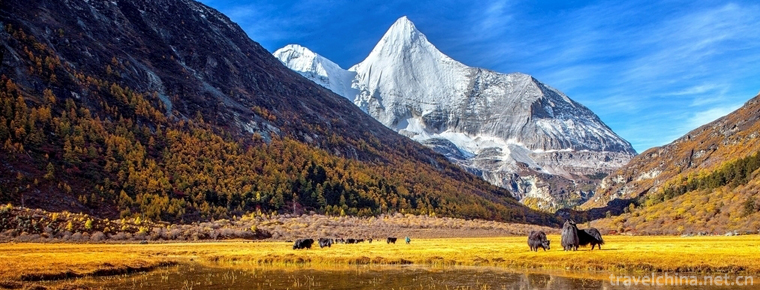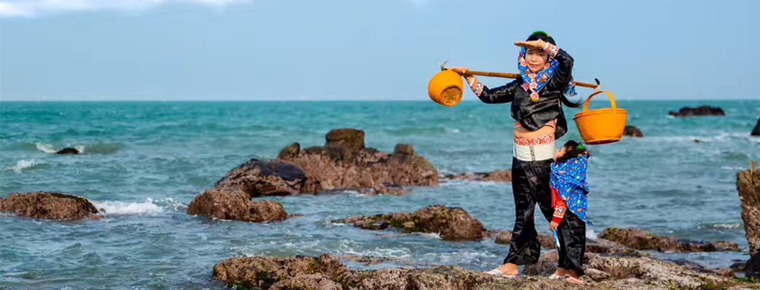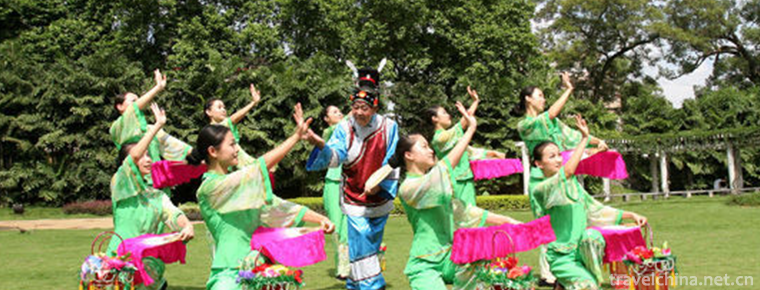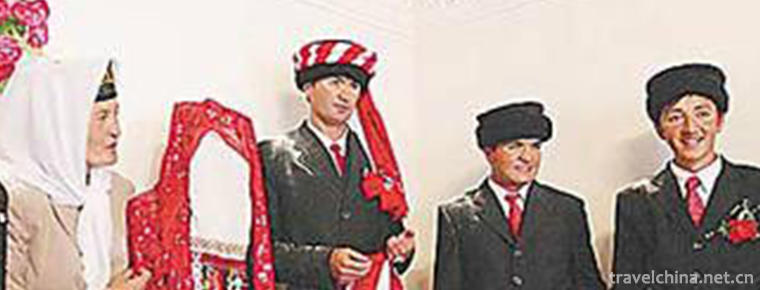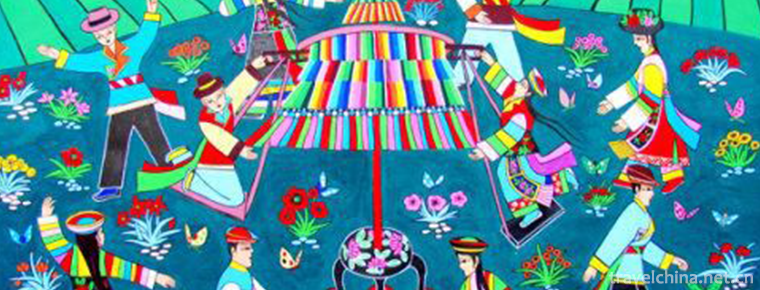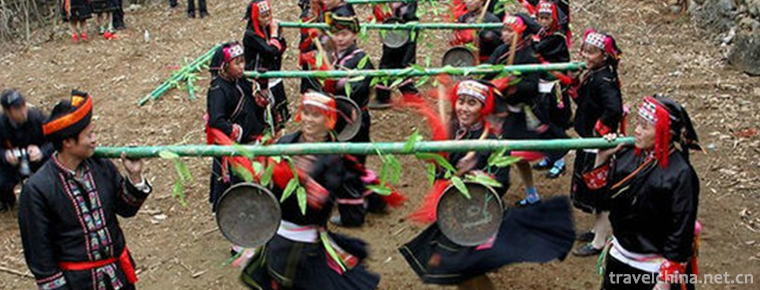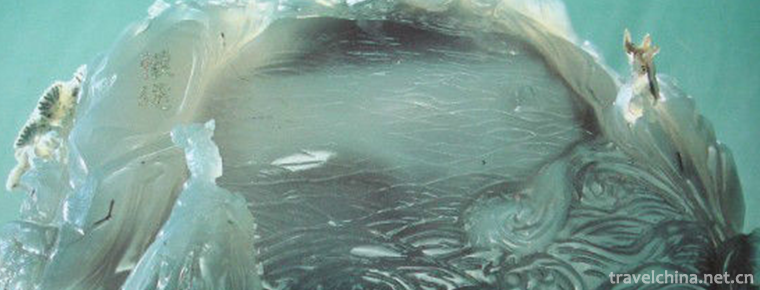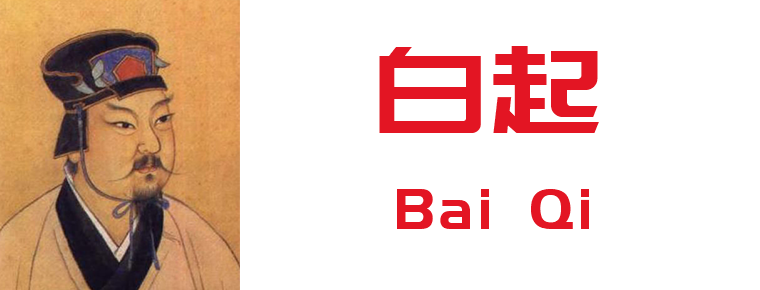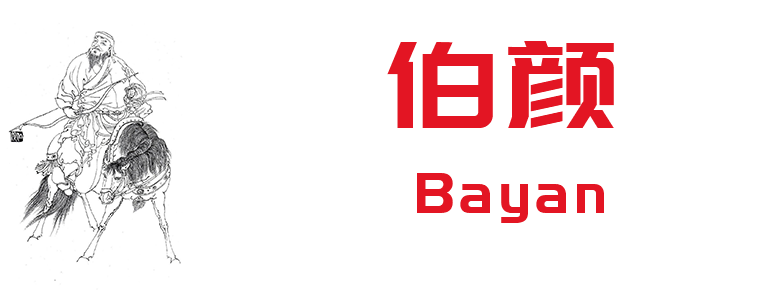Guge Kingdom Ruins
The ruins of the Guge Dynasty are located in Tuolin Town, Zanda County, Ali District, Tibet. In the middle of the 9th century, the Tubo Dynasty collapsed and some of its descendants fled to Ali and established three small kingdoms. Among them, De Zufan established the Guge Dynasty around the 10th century.
The towering Guge Old Town is located in the northwest of Tolin Town in Zabjean District, Arizada County, on the South Bank of Xiangquan River, 19 kilometers away from the county town. Built for the descendants of the Tubo Royal family, who once had a million Golden Gothic iron horses, lived here for more than 700 years, inherited more than 20 generations of kings, 1300 years ago, and died in the seventeenth century, leaving numerous precious cultural relics and historical materials for future generations.
On October 1, 2014, the Cultural Relics Bureau of Zanda County, Ali Prefecture, Tibet, said that the restoration and protection of the ruins of the Guge Dynasty, which lasted more than three years, had been completed in full.
The ruins of the old Ge kingdom are located on a mountain in Ali area. In the first half of the tenth Century ad, 16 kings were born.
The castle of the palace was expanded from the 10-16 century. Covering an area of about 180,000 square meters, from the foot of the mountain to the top of the mountain is more than 300 meters high, housing construction, Buddhist pagodas and caves all over the mountain, up to 600, forming a huge ancient building complex.
There are 5 excellent temples and temples. There are statues of clay sculpture and colored murals in the temple. The site is a valuable material for studying the history of Tibet and the history of Tibetan architecture since the tenth Century.
geographical position
The ruins of the Guge Dynasty, 18 kilometers west of Zabjean County, lie on the banks of the Spring River. They are surrounded by many earth forests. Because they are constructed from the clay soil of the surrounding soil forests, the ruins of the ancient castle are integrated with the earth forests beneath them, making it difficult to distinguish between the castle and the earth forest. Whenever sunrise or night falls, the ruins of Guge reflect a kind of incomplete beauty and solemn magnificence against the backdrop of the earth forest.
The whole castle of the Guge Dynasty was built on a loess slope more than 300 meters high. The terrain was steep and the caves, Buddhist pagodas, towers, temples and palaces were arranged in an orderly manner. From bottom to top, the castle was built on top of the mountains, pressing directly into the sky with magnificent momentum. These caves are mostly houses, densely spread over the hillside.
Ranking system
Gug's accommodation was strictly hierarchical: on the hillside was the accommodation of nobles, and under the hill was the residence of slaves.
Some caves are Buddhist monks. With such a steep mountain wall as a barrier, it is difficult to climb the top of the mountain. So how did the old Ge go up the mountain himself? The original clever Guggers built many dark passages in the mountains, some of which resemble windows, for both lighting and defense. These dark paths are twists and turns, picking up stairs and reaching the top of the palace.
The palace is always high, on the one hand to defend, on the other hand also symbolizes the supreme power of the king. However, the war destroyed the castle, and the yellow sand drowned the hero. One rose in the tenth century, performed a brilliant 700-year history of political drama, experienced 16 hereditary kings, has a population of 100,000 people of the huge nation in the 1635 Radak invasion of the war in an instant of extinction. Why did it disappear so suddenly? Why did the one hundred thousand of the year disappear? This is indeed a tempting mystery to us.
Art and culture
On this devastated land, only temples are well preserved. Several temples in the middle of the mountainside are the temple of Du Mu, the red hall and Bai Dianhe's reincarnation hall. These temples have a strong Tibetan architectural style. The eaves of the temples are mostly carved with animals such as lions, elephants, horses and peacocks. This decoration is probably related to the four divine waters diverted from the Gangdise Mountains: it is also the main rivers in the upper reaches of the Indian River - the Lion Spring River, Elephant Spring River, Maquan River and Peacock River. Let's do it.
Gugger murals are the best of Gugger art. Although they have been sleeping for centuries, they are still shining. These murals, including Buddhist stories, myths and legends, as well as the production and living scenes of the Guge people at that time, are very rich in content. Through these gorgeous pictures, it is not difficult to see the political and economic activities and cultural customs of the old Guge dynasty, from which to trace the history of the prosperity and decline of Guge.
Sculptures, statues and murals excavated around the site over the past decade have unveiled the mystery of the Gug dynasty. Most of the sculptures are gold and silver statues, and the most successful ones are the statues of silver silver eyes. The largest and most complete remains are its murals. The occupied mural is magnificent and unique in style, which fully reflects all aspects of social life at that time. The characters depicted in the painting are outstanding, and are very representative of the female characters who are full of movement. Due to the geographical location and the influence of various foreign cultures, Gug's artistic style has obvious Kashmiri and Kadhara artistic characteristics.
Ruins of the old Ge Dynasty
Gold and silver abound in Guge. A kind of Scripture written in gold and silver juice was found in Torin Temple, Zaburang and Piyang Dongga, and a great number of books were unearthed. This kind of Scripture is written on a kind of slightly blue-blue black paper in writing, one row in gold and one row in silver, the degree of luxury can not be added.
Investigation and discovery
The earliest known site of the ancient city was Mike's life. In 1912, he came back from India to see the water along the elephant spring. Since then, explorers, travellers, photographers and artists have come to explore and visit. But the real scientific expedition began in 1985 by the investigation team organized by the Tibet Autonomous Region Management Committee. According to their field survey, the total area of the site is about 720,000 square meters. 445 houses, 879 caves, 58 blockhouses, 4 underpasses, 28 Buddhist pagodas, and 1 burial place are inspected and registered.
The ruins of the Ge Ge kingdom is one of the first batch of key cultural relic sites in China. The site is more than 300 meters high from the foothills to the top of the mountain. There are buildings and caves of the same color as clay everywhere. Except for a few temples, all the houses have collapsed, leaving only a wall of earth. The walls of the ruins are built with walls, and four corners are equipped with watchtowers. The site is built on a small hill of earth. The building is divided into upper, middle and lower floors, followed by palaces, temples and dwellings. There are many fine sculptures and murals in the red temple, the white temple and the samsara temple. The important sites around the ancient capital are Dongga, Daba, Piyang and Xiangzi, which have a large number of cultural relics.



















-
Daocheng County
Daocheng county is located in the southwestern edge of Sichuan Province, south of Ganzi. Located in the southeast of the Qinghai Tibet Plateau, the eastern side of Hengduan Mountains..
Views: 101 Time 2018-10-12 -
Kazakh Aytes
Kazakh Aytes is a typical representative of Kazakh folk art, a competitive form of performance, is the most abundant content of Kazakh folk oral literature, the most influential literary type among th.
Views: 230 Time 2019-05-02 -
Huian womens clothing
Hui'an women refer to a group of special folk women on the coast of Huidong Peninsula, Hui'an County, Quanzhou, Fujian Province. They are famous at home and abroad for their unique clothes and diligen.
Views: 198 Time 2019-05-04 -
Longyan tea lamp
Longyan tea-picking lamp, also known as tea-picking and butterfly-beating, is a popular folk dance and singing in Longyan city and countryside. It integrates rap, opera and dance into a comprehensive .
Views: 197 Time 2019-05-14 -
Tajik Marriage Customs
On the Pamir Plateau, which is more than 4000 meters above sea level, there is a Tajik people living in China. This is a people who can sing, dance and hospitality. Their life is full of mystery, and .
Views: 114 Time 2019-06-17 -
Turkish Pan Embroidery
Pan embroidery is the most important embroidery method in Chinese Tu embroidery, and it is a compulsory course for Tu women in their lifetime. Pan embroidery is a unique embroidery method of the Tu na.
Views: 388 Time 2019-06-23 -
Golden Gong dance of Yao nationality
In November 2014, the Golden Gong dance of Yao nationality declared by Tiandong County of Guangxi Zhuang Autonomous Region was listed in the fourth batch of national intangible cultural heritage list .
Views: 221 Time 2019-07-11 -
Jade carving
Jade carving is one of the oldest carving varieties in China. Jade carved into exquisite crafts, known as jade carving. Craftsmen in the production process, according to the natural color and shape of.
Views: 343 Time 2019-07-16 -
Bai Qi
White(Bai Qi)(? - 257 BC). He is a man in the village of Bai village, Chang Xing Town, Mei County, Shaanxi today. Outstanding military strategist and representative of "military strategist" .
Views: 131 Time 2019-09-11 -
Bo Yan
Bo Yan (1236 - January 11, 1295), eight neighbouring people in Mongolia. Yuan Dynasty Famous ministers in early years.
Views: 228 Time 2019-09-14 -
Four famous Chinese embroidery
Suzhou embroidery is famous for its fine stitches, elegant colors and fine embroidery. It has the characteristics of flat, light, even, harmonious, fine and dense. The theme is mainly about small animals. Such as "cat play", "wind through flowers",.
Views: 317 Time 2020-12-12 -
Notice for visiting Chengdu Giant Panda Base
Please don't make any noise. Don't make any abnormal or sharp sounds, which will disturb the wild animals. Giant pandas and other animals naturally like quiet environment and are sensitive to noise. In order to ensure the effect of your visit, please respect their living habits and keep a quiet environment..
Views: 74 Time 2020-12-13
